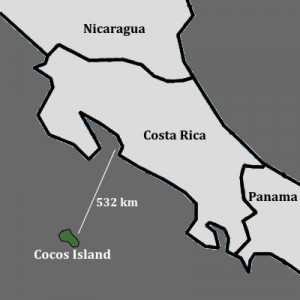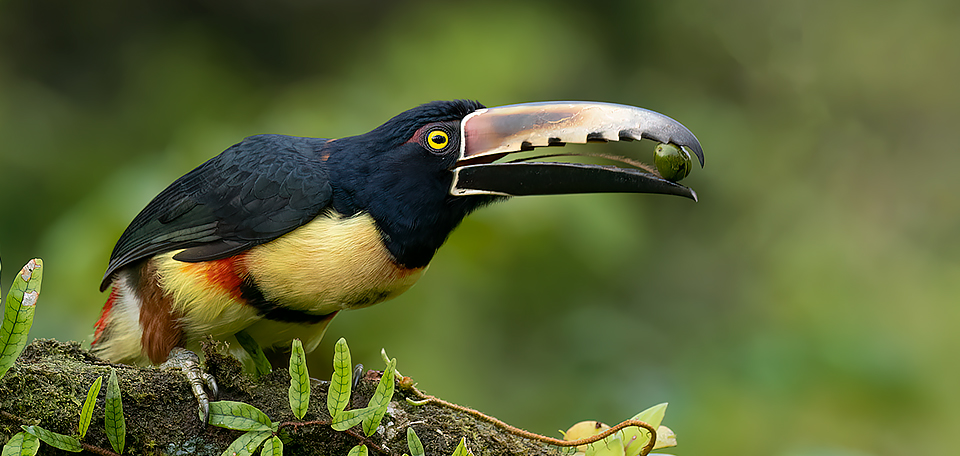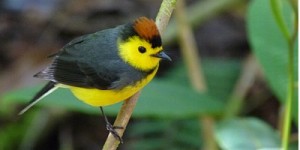
An endemic species has a limited distribution range; a species that can be found in a certain area of the world but nowhere else. Endemic species originate when a population of a species becomes isolated by a certain geographical barrier for a long time. As a result, the isolated population will gradually evolve into a new species by natural selection. The many endemic bird-species in the country make birdwatching in Costa Rica very interesting.
In Costa Rica we can identify 3 endemic areas:
- Costa Rica highlands: the highlands of Costa Rica are oriented northwest – southeast and extend more or less from Central Costa Rica to Western Panama (als called the Talamanca mountain chain). These mountains are isloated from mountains further north in Guatemala and Mexico and from the Andes in the south. Therefore many birdspecies who reached the Costa Rica mountains became isolated and evolved into unique endemic bird species. An impressive 47 bird species are endemic to the mountains and foothills of Costa Rica and Western Panama. Examples area: Yellow-thighed Finch (pselliophorus tibialis), Collared Redstart (myioborus torquatus), Black Guan (chamaepetes unicolor) and Golden-browed Chlorophonia (chlorophonia callophrys). The Coppery-headed Emerald (elvira cupreiceps) deserves special attention, since it is one of the few birds of Costa Rica that is strictly endemic: it can only be found in Costa Rica and nowhere else in the world… Exellent Costa Rica birding lodges where some of these endemic bird species can be observed are: Hotel Savegre , Rancho Naturalista and Hotel Bosque de Paz. Check out the complete list of endemic birds of Costa Rica
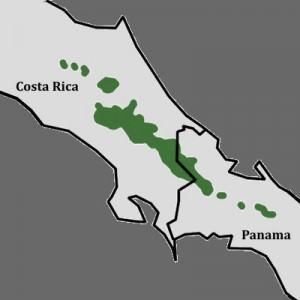
-
The South Pacific lowlands: the lowlands of southern Costa Rica extend from Parque Nacional Carara to western Panama and are characterized by a wet tropical climate that was once completely covered by tropical rainforest. Today extensive untouched lowlands rainforest can still be found in some well preserved national parks like Parque Nacional Corcovado and Parque Nacional Carara. Much of it, however has been converted in agricultural area like African Palm plantations, cattle fields, and sugar-cane fields. The south Pacific lowlands are bordered in the south by the Talamanca mountains and in the northwest and southeast by dryer areas, which makes this tropical humid area isolated from other similar areas. Therefore several populations of typical rainforest birds became isolated from similar populations from the Caribean humid lowlands, on the other side of the Talamanca mountains and gradually evolved into unique endemic species. Examples area Fiery-billed Aracari (pteroglossus frantzii), Turqoise Cotinga (cotinga ridgwayi), Riverside Wren (thryothorus semibadius), and the Spot-crowned Euphonia (euphonia imitans). The Black-cheeked Ant-tanager is strictly endemic: it can only be found in the southern Pacific lowlands of Costa Rica and nowhere else in the wolrd… Exellent Costa Rica birding lodges where some of these endemic bird species can be observed are: Talari Mountain Lodge, Hacienda Barú, Esquinas Rainforest Lodge, Bosque del Rio Tigre Lodge and Hotel Villa Lapas. Check out the complete list of endemic birds of Costa Rica
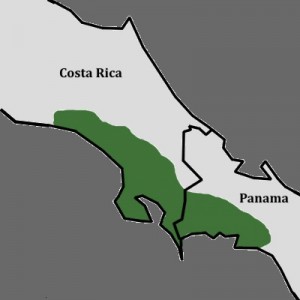
-
Coco Island: Coco Island is located 1000 km southeast from Coasta Rica’s Pacific Coast and belongs to the Galapagos archipelago. Three strict endemic Costa Rica bird species can be seen here: Cocos Finch (pinaroloxias inornata), Cocos Flycatcher ( nesotriccus ridgwayi) and Cocos Cuckoo (coccyzus ferrugineus)
